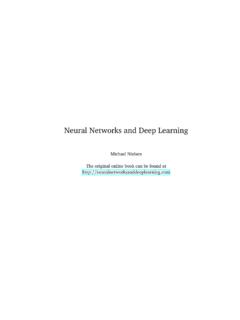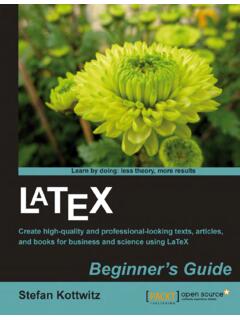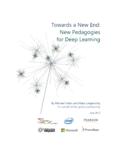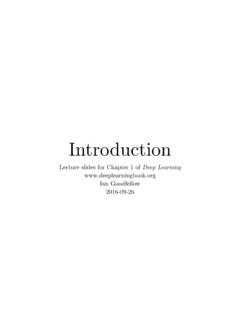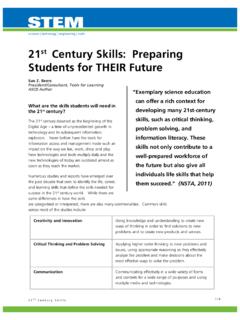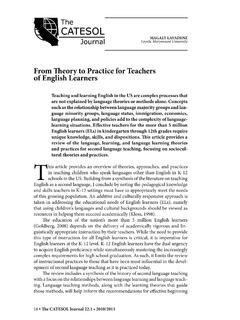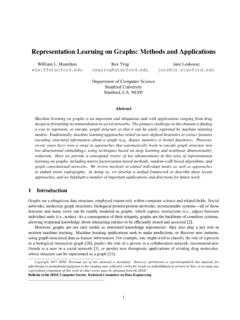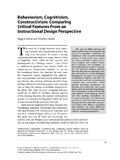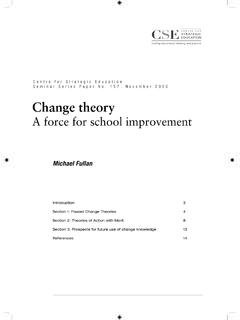Transcription of Neural Networks and Deep Learning - latexstudio
1 Neural Networks and deep LearningMichael NielsenThe original online book can be found iContentsWhat this book is aboutiiiOn the exercises and problemsv1 Using Neural nets to recognize handwritten Perceptrons .. Sigmoid neurons .. The architecture of Neural Networks .. A simple network to classify handwritten digits .. Learning with gradient descent .. Implementing our network to classify digits .. Toward deep Learning .. 352 How the backpropagation algorithm up: a fast matrix-based approach to computing the output from a neuralnetwork .. The two assumptions we need about the cost function .. The Hadamard product,s t.. The four fundamental equations behind backpropagation .. Proof of the four fundamental equations (optional).
2 The backpropagation algorithm .. The code for backpropagation .. In what sense is backpropagation a fast algorithm? .. Backpropagation: the big picture .. 533 Improving the way Neural Networks The cross-entropy cost function .. Introducing the cross-entropy cost function .. Using the cross-entropy to classify MNIST digits .. What does the cross-entropy mean? Where does it come from? .. Softmax .. Overfitting and regularization .. Regularization .. Why does regularization help reduce overfitting? .. Other techniques for regularization .. Weight initialization .. Handwriting recognition revisited: the code .. How to choose a Neural network s hyper-parameters?
3 Other techniques .. 118ii Variations on stochastic gradient descent .. 1184 A visual proof that Neural nets can compute any Two caveats .. Universality with one input and one output .. Many input variables .. Extension beyond sigmoid neurons .. Fixing up the step functions .. 1485 Why are deep Neural Networks hard to train? The vanishing gradient problem .. s causing the vanishing gradient problem? Unstable gradients in deepneural nets .. Unstable gradients in more complex Networks .. Other obstacles to deep Learning .. 1646 deep Introducing convolutional Networks .. Convolutional Neural Networks in practice .. The code for our convolutional Networks .. Recent progress in image recognition.
4 Other approaches to deep Neural nets .. On the future of Neural Networks .. 205A Is there a simple algorithm for intelligence?211 iiiWhat this book is aboutNeural Networks are one of the most beautiful programming paradigms ever invented. Inthe conventional approach to programming, we tell the computer what to do, breaking bigproblems up into many small, precisely defined tasks that the computer can easily contrast, in a Neural network we don t tell the computer how to solve our problem. Instead,it learns from observational data, figuring out its own solution to the problem at Learning from data sounds promising. However, until 2006 we didn tknow how to train Neural Networks to surpass more traditional approaches, except fora few specialized problems.
5 What changed in 2006 was the discovery of techniques forlearning in so-called deep Neural Networks . These techniques are now known as deeplearning. They ve been developed further, and today deep Neural Networks and deep learningachieve outstanding performance on many important problems in computer vision, speechrecognition, and natural language processing. They re being deployed on a large scale bycompanies such as Google, Microsoft, and purpose of this book is to help you master the core concepts of Neural Networks ,including modern techniques for deep Learning . After working through the book you willhave written code that uses Neural Networks and deep Learning to solve complex patternrecognition problems. And you will have a foundation to use Neural Networks and deeplearning to attack problems of your own principle-oriented approachOne conviction underlying the book is that it s better to obtain a solid understanding of thecore principles of Neural Networks and deep Learning , rather than a hazy understandingof a long laundry list of ideas.
6 If you ve understood the core ideas well, you can rapidlyunderstand other new material. In programming language terms, think of it as masteringthe core syntax, libraries and data structures of a new language. You may still only know atiny fraction of the total language many languages have enormous standard libraries butnew libraries and data structures can be understood quickly and means the book is emphatically not a tutorial in how to use some particular neuralnetwork library. If you mostly want to learn your way around a library, don t read this book!Find the library you wish to learn, and work through the tutorials and documentation. Butbe warned. While this has an immediate problem-solving payoff, if you want to understandwhat s really going on in Neural Networks , if you want insights that will still be relevantyears from now, then it s not enough just to learn some hot library.
7 You need to understandthe durable, lasting insights underlying how Neural Networks work. Technologies come andtechnologies go, but insight is What this book is aboutA hands-on approachWe ll learn the core principles behind Neural Networks and deep Learning by attacking aconcrete problem: the problem of teaching a computer to recognize handwritten digits. Thisproblem is extremely difficult to solve using the conventional approach to yet, as we ll see, it can be solved pretty well using a simple Neural network , with just afew tens of lines of code, and no special libraries. What s more, we ll improve the programthrough many iterations, gradually incorporating more and more of the core ideas aboutneural Networks and deep hands-on approach means that you ll need some programming experience to readthe book.
8 But you don t need to be a professional programmer. I ve written the code in Python(version ), which, even if you don t program in Python, should be easy to understand withjust a little effort. Through the course of the book we will develop a little Neural networklibrary, which you can use to experiment and to build understanding. All the code is availablefor download here. Once you ve finished the book, or as you read it, you can easily pick upone of the more feature-complete Neural network libraries intended for use in a related note, the mathematical requirements to read the book are modest. Thereis some mathematics in most chapters, but it s usually just elementary algebra and plots offunctions, which I expect most readers will be okay with. I occasionally use more advancedmathematics, but have structured the material so you can follow even if some mathematicaldetails elude you.
9 The one chapter which uses heavier mathematics extensively is Chapter 2,which requires a little multivariable calculus and linear algebra. If those aren t familiar, Ibegin Chapter 2 with a discussion of how to navigate the mathematics. If you re finding itreally heavy going, you can simply skip to the summary of the chapter s main results. In anycase, there s no need to worry about this at the s rare for a book to aim to be both principle-oriented and hands-on. But I believeyou ll learn best if we build out the fundamental ideas of Neural Networks . We ll developliving code, not just abstract theory, code which you can explore and extend. This way you llunderstand the fundamentals, both in theory and practice, and be well set to add further toyour knowledge.
10 VOn the exercises and problemsIt s not uncommon for technical books to include an admonition from the author that readersmust do the exercises and problems. I always feel a little peculiar when I read such something bad happen to me if I don t do the exercises and problems? Of course ll gain some time, but at the expense of depth of understanding. Sometimes that s worth it s what s worth doing in this book? My advice is that you really should attempt most ofthe exercises, and you should aimnotto do most of the should do most of the exercises because they re basic checks that you ve understoodthe material. If you can t solve an exercise relatively easily, you ve probably missed somethingfundamental. Of course, if you do get stuck on an occasional exercise, just move on chancesare it s just a small misunderstanding on your part, or maybe I ve worded something if most exercises are a struggle, then you probably need to reread some earlier problems are another matter.
